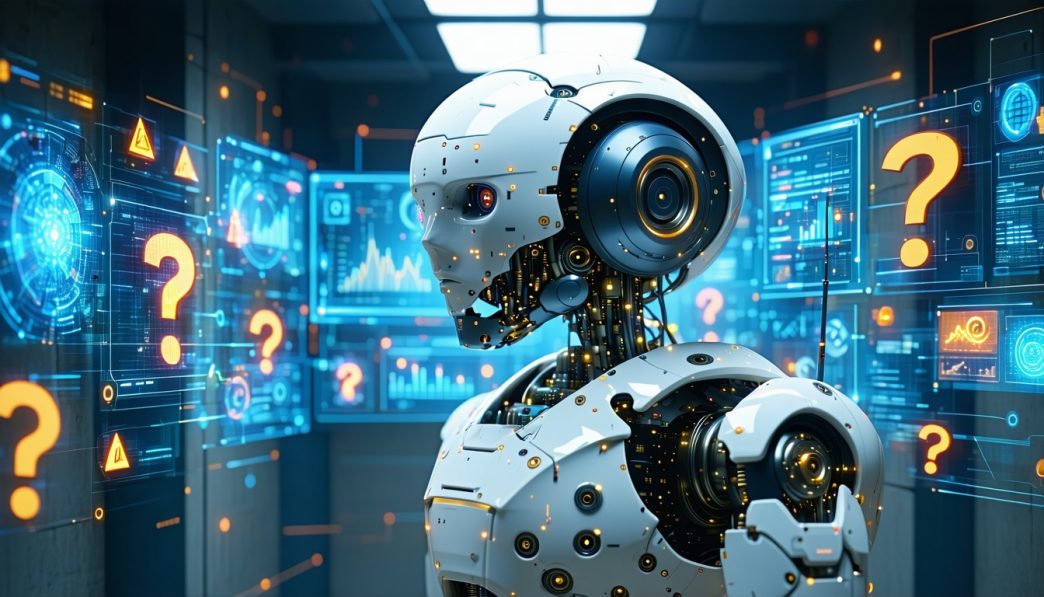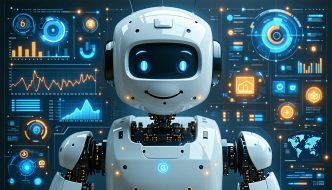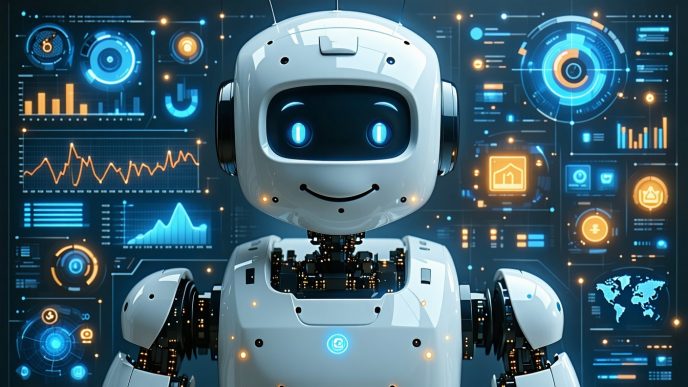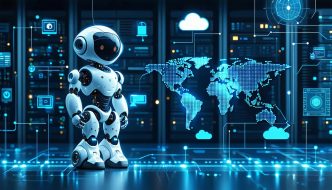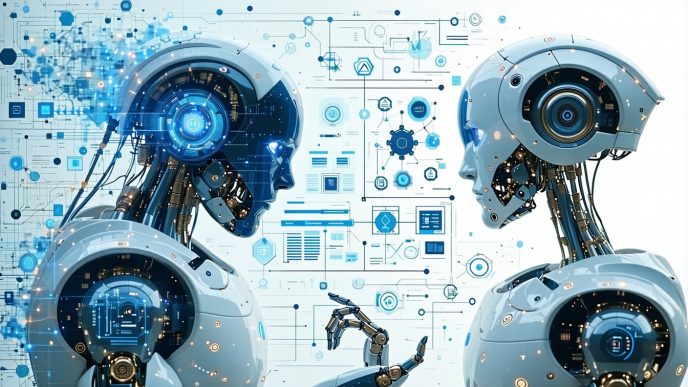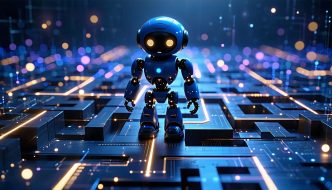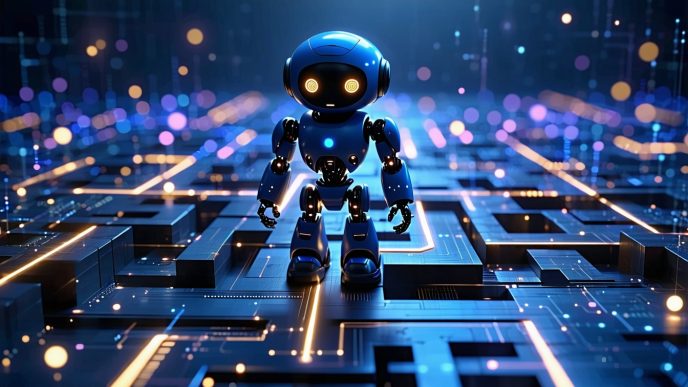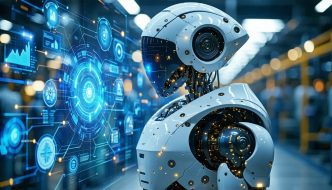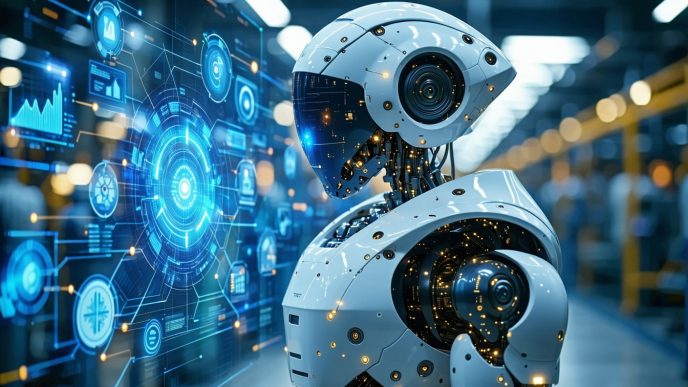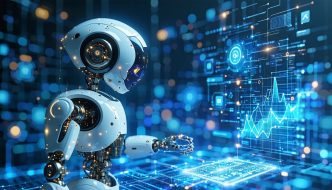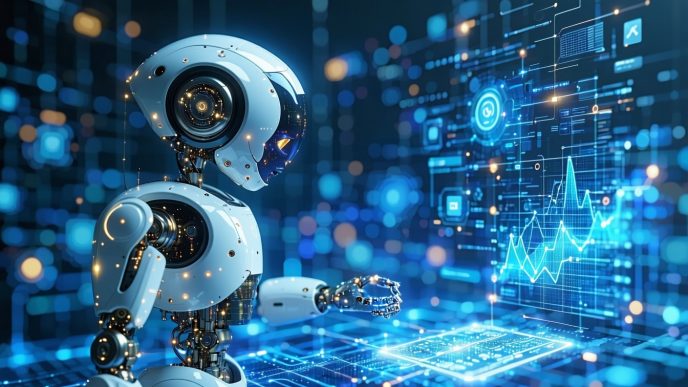Understanding Autonomous Robots
Overview of Autonomous Robots
Autonomous robots are machines capable of performing tasks without direct human control. They utilize various technologies, including sensors, cameras, and advanced algorithms, to navigate their environments and make decisions independently. Such robots are increasingly used in different settings, from industrial manufacturing to home automation.
A key feature of autonomous robots is their ability to assess their surroundings and execute tasks based on real-time data. They process information using complex algorithms that enable them to adapt their behaviors based on previous experiences, leading to more efficient task completion.
| Feature | Description |
|---|---|
| Sensors | Gather data about the environment |
| Decision-Making | Analyze data to make informed choices |
| Autonomy Level | Varies from partial to complete independence |
| Interaction | Can work alongside humans or other robots |
Importance of Learning from Errors
Learning from mistakes is vital for the development of autonomous robots. When these machines encounter errors, they can use the experience to improve future performance. This concept is referred to as the adaptive learning mechanism, which allows robots to refine their decision-making processes over time.
Robots face various challenges in environments that are often unpredictable. By recognizing and correcting their autonomous robot decision mistakes, they become more adept at handling similar situations in the future. This iterative learning process is essential to build robust systems capable of functioning effectively in dynamic settings.
Key benefits of error-based learning for autonomous robots include:
- Improved Efficiency: Robots can reduce their error rates over time, leading to increased productivity.
- Enhanced Reliability: By learning from past mistakes, robots can develop strategies to avoid similar errors, enhancing trust in their operations.
- Greater Adaptability: Robots can adjust their behaviors based on varied circumstances, making them better suited for complex tasks.
For a deeper understanding of how robots make decisions and learn, explore our article on ai and decision making in robots.
Learning Mechanisms in Robots
Understanding how robots learn from their errors involves exploring the underlying mechanisms that enable them to improve their decision-making processes over time. Two primary learning approaches used in robotics are machine learning and deep reinforcement learning.
Machine Learning in Robotics
Machine learning is a subset of artificial intelligence that allows robots to learn from data and improve their performance based on experience. Through algorithms, robots can analyze data patterns to make predictions or decisions. This process is essential for enhancing their autonomous robot decision making.
Robots trained using machine learning can adapt to their environments and learn from past mistakes. For example, a robot tasked with navigating a maze can analyze its previous attempts and figure out the most efficient path to reach the exit.
Key Components of Machine Learning in Robotics
| Component | Description |
|---|---|
| Training Data | The dataset used to teach the robot about its tasks |
| Algorithms | Mathematical models that analyze input data |
| Feedback | Information about the robot’s performance |
Machine learning helps robots optimize their functions by continually learning from outcomes. For a deeper understanding of this process, refer to our article on ai and decision making in robots.
Deep Reinforcement Learning
Deep reinforcement learning is an advanced form of machine learning that combines deep learning and reinforcement learning. It enables robots to make decisions based on trial and error through a reward system. This means robots learn to navigate their environment by receiving feedback based on their actions.
In this method, a robot takes actions to achieve a goal and receives rewards for correct decisions. Through repeated simulations, the robot adjusts its strategies to maximize rewards while minimizing errors. This learning mechanism is especially useful for complex tasks like robot pathfinding and decision making.
Process of Deep Reinforcement Learning
| Step | Description |
|---|---|
| Agent | The robot that takes actions in the environment |
| Environment | The surroundings the robot interacts with |
| Reward | Positive reinforcement for correct actions |
| Policy | A strategy that defines the actions taken by the robot |
Deep reinforcement learning allows robots to handle various tasks in unpredictable conditions. For additional insights into robot learning models, explore our article on robot learning models explained.
Both machine learning and deep reinforcement learning are crucial for enhancing the ability of autonomous robots to learn from their decision mistakes, leading to improved functionality and effectiveness in real-world applications.
Error Recognition in Robots
Understanding how autonomous robots recognize and learn from their decision mistakes is essential for improving their functionality. This section explores the different types of errors robots encounter and the methods they use to identify these errors.
Types of Errors Robots Encounter
Robots can face various decision-making errors in different scenarios. Here are some common types:
| Error Type | Description |
|---|---|
| Sensor Errors | Mistakes in data collection due to faulty sensors |
| Navigation Errors | Incorrect pathfinding or movement decisions |
| Execution Errors | Failures in carrying out tasks as intended |
| Communication Errors | Issues arising from misinterpretation of commands |
| Environmental Errors | Challenges caused by unexpected changes in surroundings |
These errors can impact a robot’s performance and overall effectiveness, making error recognition crucial for continuous improvement.
How Robots Identify Errors
Robots employ several strategies to identify their mistakes and learn from them. Here are some key methods:
-
Feedback Mechanisms: Robots utilize sensors to receive real-time feedback about their environment and performance. This data helps them compare expected outcomes with actual results.
-
Machine Learning Algorithms: By implementing machine learning models, robots can analyze patterns in the errors they encounter. These algorithms enable robots to adapt their decision-making processes based on past mistakes.
-
Simulation and Testing: Many robots undergo rigorous testing in controlled environments to identify weaknesses in their decision-making. Simulation helps robots anticipate potential failures before applying learned knowledge in real-world scenarios.
-
Performance Metrics: Robots can monitor key performance indicators such as success rates and error frequencies over time. Analyzing these metrics helps them recognize trends in their decision-making processes.
-
Cross-Referencing Data: By comparing data across multiple trials or situations, robots can develop a comprehensive understanding of the circumstances that led to specific errors.
For further insights into how robots make decisions, explore our article on ai and decision making in robots. This understanding of error recognition is vital for enhancing the efficiency of autonomous robot systems.
Adjusting Behavior
In order for autonomous robots to perform optimally, they must be able to adjust their behavior based on their experiences. This adaptability is crucial when they encounter errors. By recognizing and responding to mistakes, robots enhance their functionality and improve their decision-making processes.
Adaptation to Errors
When robots make errors—referred to as autonomous robot decision mistakes—they analyze the causes of these mistakes through various learning mechanisms. Depending on their programming and design, robots can adapt their actions based on past experiences.
The adaptation process often includes:
- Error Analysis: Identifying why a mistake occurred, such as mistaking an object or failing to navigate correctly.
- Behavior Modification: Changing future actions to avoid repeated mistakes, which can be accomplished through strategies like adjusting speed or altering navigation paths.
The following table illustrates examples of errors and potential adaptations:
| Error Type | Example Scenario | Adaptation Strategy |
|---|---|---|
| Misidentification | Robot fails to recognize objects | Improve image recognition algorithms |
| Navigation Error | Robot unable to find the exit | Adjust pathfinding algorithms |
| Timing Mistake | Robot miscalculates task duration | Update task scheduling parameters |
Updating Decision-Making Process
Once a robot has adapted its behavior in response to errors, the next step involves updating its decision-making process. This is critical for successful long-term performance and involves several key components:
- Algorithm Adjustment: Robots often use machine learning algorithms that allow for continuous improvement based on new data gathered during operations. By refining these algorithms, robots can make better decisions moving forward.
- Feedback Loop Integration: A feedback loop is established where robots evaluate the outcomes of their actions. This reflection enables them to set parameters for future operations based on what has previously worked or failed.
| Decision-Making Component | Description |
|---|---|
| Feedback Systems | Mechanisms that assess outcomes of actions |
| Parameter Adjustment | Modifying variables within decision-making algorithms based on new data |
| Learning Rate Tuning | Adjusting how quickly the robot learns from new experiences |
These updates enable robots to enhance their performance in real-time, ensuring they remain capable of handling a variety of tasks in dynamic environments. For a deeper exploration of how these processes unfold, check out our articles on ai and decision making in robots and robot learning models explained.
Evolution of Decision-Making
As autonomous robots continue to develop, their decision-making abilities also evolve. This section discusses how their decision processes progress over time and how they integrate past experiences into their learning.
Progression Over Time
The decision-making capabilities of autonomous robots improve through various stages. Initially, these robots rely on basic algorithms and programmed instructions. Over time, they adapt and refine their processes based on interactions with their environments.
This progression can be broken down into several key phases:
| Phase | Description |
|---|---|
| Initial Programming | Robots operate on predefined rules and functions. |
| Error Recognition | They begin to recognize when decisions lead to undesirable outcomes. |
| Adaptive Learning | Robots start modifying their decision-making strategies based on feedback. |
| Advanced Learning | Utilizing machine learning techniques, robots can improve performance over time. |
As robots accumulate more data, their ability to make more informed decisions increases. The adjustments made in response to autonomous robot decision mistakes facilitate a continuous cycle of improvement.
Integration of Past Experiences
Another significant aspect of evolving decision-making is how robots integrate their past experiences. By recording previous errors and the contexts in which they occurred, robots can build a knowledge base that informs future behaviors.
This process involves:
- Error Logging: Robots keep track of mistakes in their decision-making history.
- Context Analysis: They analyze the situations surrounding errors to understand triggers and patterns.
- Knowledge Application: Robots apply insights from past experiences to enhance current decisions.
For example, if a robot consistently encounters obstacles in a specific environment, it can adjust its navigation strategies based on previously learned information. This cyclical learning model is critical for enhancing ai and decision making in robots and showcases how robots can evolve their capabilities through experience.
Integrating past experiences is essential for robots to function effectively in complex environments. This ability allows them to navigate challenges more efficiently and make better decisions. For further insight into how robots process and learn from data, refer to our article on robot learning models explained.
Fine-Tuning Strategies
To improve the performance of autonomous robots, various fine-tuning strategies are employed. These strategies focus on continuous learning methods and optimization techniques, allowing robots to learn effectively from their experiences and minimize decision-making errors.
Continuous Learning Methods
Continuous learning refers to the ability of robots to learn and adapt continuously from new data and experiences. This method allows robots to refine their decision-making processes over time. Several approaches are involved in continuous learning:
- Incremental Learning: Robots update their knowledge base as they encounter new information, allowing for the integration of real-time experiences.
- Transfer Learning: Knowledge gained from one task can be applied to other related tasks, facilitating faster learning and adaptation.
- Online Learning: Robots adjust their algorithms in real-time as new data comes in, letting them respond promptly to changes in their environments.
| Learning Method | Description | Example |
|---|---|---|
| Incremental Learning | Updates knowledge with new data | A robot recognizing new obstacles |
| Transfer Learning | Applies learning from one task to another | A robot using navigation skills from a new environment |
| Online Learning | Adapts decision-making in real-time | A robot adjusting its path based on sudden obstacles |
These continuous learning approaches enable robots to address autonomous robot decision mistakes more effectively by enhancing their ability to adapt to new situations.
Optimization Techniques
Optimization techniques focus on refining the robots’ decision-making processes to reduce errors and improve efficiency. These techniques involve adjusting algorithms and parameters to improve performance. Key optimization methods include:
- Parameter Tuning: Adjusting model parameters to achieve the best performance for specific tasks.
- Algorithm Optimization: Selecting or developing algorithms that perform well in various situations, considering factors like speed and accuracy.
- Feedback Loops: Implementing systems that allow robots to receive feedback on their decisions, which can be used to refine their future choices.
| Optimization Technique | Purpose | Application |
|---|---|---|
| Parameter Tuning | Enhances performance by adjusting settings | Finding the optimal speed for navigation |
| Algorithm Optimization | Improves decision-making efficiency | Optimizing route planning algorithms |
| Feedback Loops | Refines future decisions based on past outcomes | Adjusting paths based on previous errors |
These optimization strategies play a crucial role in helping robots make more precise decisions, further mitigating instances of autonomous robot decision mistakes and enhancing their overall functioning. By employing these fine-tuning methods, researchers and developers can ensure that robots become increasingly proficient and reliable in their tasks.
Real-Time Decision Making
Real-time decision making is a crucial aspect of how autonomous robots function effectively in dynamic environments. For these machines, the ability to recognize and respond to errors swiftly can significantly enhance their performance and reliability.
Rapid Error Correction
When an autonomous robot encounters a mistake, it must quickly assess the situation and correct its course of action. This rapid error correction involves a series of steps that include recognizing the error, analyzing its cause, and implementing adjustments to prevent future occurrences.
The following table outlines common types of errors and the typical correction strategies employed by robots:
| Type of Error | Example Scenario | Correction Strategy |
|---|---|---|
| Navigation Error | Straying off path | Recalculate route using sensors |
| Object Detection Error | Failing to identify an obstacle | Reinforce recognition algorithms |
| Movement Error | Colliding with an object | Adjust movement algorithms dynamically |
Robots often employ sophisticated algorithms and data processing techniques to facilitate rapid error correction. They utilize information from their sensors and machine learning models to recalibrate their actions almost instantaneously.
Adaptive Responses
Beyond merely correcting errors, autonomous robots must also adapt their behavior based on past experiences to handle similar situations better in the future. Such adaptive responses can be classified into two categories: reactive and proactive.
-
Reactive Responses: These involve immediate adjustments in response to unforeseen circumstances. For instance, if a robot detects an obstacle that wasn’t in its original path, it may reroute or alter its speed to avoid a collision.
-
Proactive Responses: These require the robot to anticipate potential issues based on learned behavior. For example, it may alter its path based on previous encounters with similar obstacles or buffer its movements in anticipation of erratic objects in its environment.
Robots utilize advanced techniques in real time AI processing in robots to refine their adaptive responses. This ongoing learning loop enables them to become more efficient over time and reduces the likelihood of encountering the same errors repeatedly. An understanding of their decision-making processes, including ai and decision making in robots, provides deeper insights into how they manage autonomous robot decision mistakes effectively.
Impact on Future Technologies
The advancements in autonomous robots significantly influence various sectors, transforming how tasks are executed and improving efficiency. By learning from their mistakes, these robots are not only enhancing their capabilities but also shaping the future of technology.
Applications in Various Industries
Autonomous robots find their utility across multiple industries, each benefiting from their ability to learn and adapt. The following table summarizes some key sectors and examples of robot applications:
| Industry | Examples of Applications |
|---|---|
| Manufacturing | Assembly line robots optimizing production |
| Healthcare | Surgical robots improving precision |
| Agriculture | Autonomous tractors and drones enhancing efficiency |
| Logistics | Warehouse robots optimizing inventory management |
| Retail | Customer service robots providing assistance |
In these environments, robots are equipped to deal with challenges, continuously learning from their autonomous robot decision mistakes to enhance performance. For a deeper understanding of AI’s role in these tasks, read about AI and decision making in robots.
Potential Developments in Autonomous Systems
Future developments in autonomous robots promise to revolutionize industries further. Innovations are expected in areas such as:
- Edge AI in Robotics: This allows robots to process data locally, reducing latency and enabling real-time decision making.
- Multi-Agent AI in Robotics: Collaboration between multiple robots can lead to more efficient problem-solving and task completion.
- AI Decision Transparency in Robots: Enhancing understanding of how decisions are made can improve user trust and safety in robotic applications.
The integration of large language models in robotics is also a growing area, facilitating more sophisticated communication and decision-making processes. If interested in how these advancements are made possible, delve into our article on robot learning models explained and the role of real-time AI processing in robots.
As autonomous technology continues to evolve, it will likely bring about increased efficiency, transformed workspaces, and enhanced user experience across various sectors. The implications of robots learning from errors extend beyond immediate applications, leading to smarter, more capable systems in the future.


